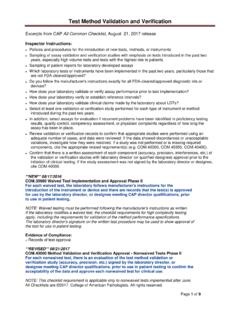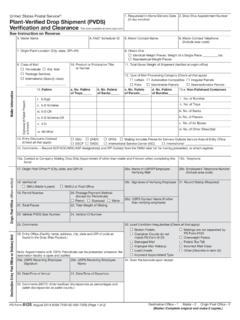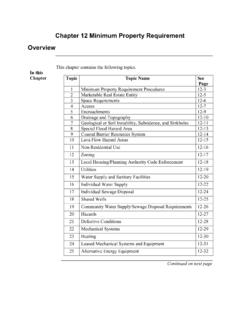Transcription of SYSTEMS ENGINEERING FUNDAMENTALS
1 IntroductionSystems ENGINEERING FundamentalsiSYSTEMSENGINEERINGFUNDAMENT ALSJ anuary 2001 SUPPLEMENTARY TEXTPREPARED BY THEDEFENSE ACQUISITION UNIVERSITY PRESSFORT BELVOIR, VIRGINIA 22060-5565 SYSTEMS ENGINEERING FundamentalsIntroductioniiIntroductionSy stems ENGINEERING FundamentalsiiiTABLE ivPART 1. INTRODUCTIONC hapter to SYSTEMS ENGINEERING Management .. 3 Chapter ENGINEERING Management in DoD Acquisition .. 11 PART 2. THE SYSTEMS ENGINEERING PROCESSC hapter ENGINEERING Process Overview .. 31 Chapter Analysis .. 35 Chapter Analysis and Allocation .. 45 Chapter Synthesis .. 57 Chapter ..65 Chapter ENGINEERING Process Outputs.
2 73 PART 3. SYSTEM ANALYSIS AND CONTROLC hapter Breakdown Structure .. 85 Chapter 10. Configuration Management .. 91 Chapter 11. Technical Reviews and Audits .. 99 Chapter 12. Trade Studies .. 111 Chapter 13. Modeling and Simulation .. 117 Chapter 14. Metrics .. 125 Chapter 15. Risk Management .. 133 PART 4. PLANNING, ORGANIZING, AND MANAGINGC hapter 16. SYSTEMS ENGINEERING Planning .. 147 Chapter 17. Product Improvement Strategies .. 157 Chapter 18. Organizing and Integrating System Development .. 171 Chapter 19. Contractual Considerations .. 185 Chapter 20. Management Considerations and Summary.
3 209 SYSTEMS ENGINEERING FundamentalsIntroductionivPREFACEThis book provides a basic, conceptual-level description of ENGINEERING management disciplines thatrelate to the development and life cycle management of a system. For the non-engineer it provides anoverview of how a system is developed. For the engineer and project manager it provides a basic frameworkfor planning and assessing system in the book is from various sources, but a good portion is taken from lecture material devel-oped for the two SYSTEMS Planning, Research, Development, and ENGINEERING courses offered by theDefense Acquisition book is divided into four parts: Introduction; SYSTEMS ENGINEERING Process; SYSTEMS Analysis andControl; and Planning, Organizing, and Managing.
4 The first part introduces the basic concepts thatgovern the SYSTEMS ENGINEERING process and how those concepts fit the Department of Defense acquisitionprocess. Chapter 1 establishes the basic concept and introduces terms that will be used throughout thebook. The second chapter goes through a typical acquisition life cycle showing how SYSTEMS engineeringsupports acquisition decision second part introduces the SYSTEMS ENGINEERING problem -solving process, and discusses in basicterms some traditional techniques used in the process. An overview is given, and then the process ofrequirements analysis, functional analysis and allocation, design synthesis, and verification is explainedin some detail.
5 This part ends with a discussion of the documentation developed as the finished output ofthe SYSTEMS ENGINEERING three discusses analysis and control tools that provide balance to the process. Key activities (such asrisk management, configuration management, and trade studies) that support and run parallel to thesystem ENGINEERING process are identified and four discusses issues integral to the conduct of a SYSTEMS ENGINEERING effort, from planning toconsideration of broader management some chapters supplementary sections provide related material that shows common techniques orpolicy-driven processes.
6 These expand the basic conceptual discussion, but give the student a clearerpicture of what SYSTEMS ENGINEERING means in a real acquisition 1 Introduction to SYSTEMS Engineering1 PART 1 INTRODUCTIONS ystems ENGINEERING FundamentalsChapter 12 Chapter 1 Introduction to SYSTEMS Engineering3 CHAPTER 1 INTRODUCTION TOSYSTEMS PURPOSEThe overall organization of this text is describedin the Preface. This chapter establishes some ofthe basic premises that are expanded throughoutthe book. Basic terms explained in this chapter arethe foundation for following definitions. Key sys-tems ENGINEERING ideas and viewpoints are pre-sented, starting with a definition of a DEFINITIONSA System Is.
7 Simply stated, a system is an integrated compositeof people, products, and processes that provide acapability to satisfy a stated need or ENGINEERING ENGINEERING consists of two significantdisciplines: the technical knowledge domain inwhich the SYSTEMS engineer operates, and systemsengineering management. This book focuses onthe process of SYSTEMS ENGINEERING commonly used definitions of systemsengineering are provided by the best known tech-nical standards that apply to this subject. They allhave a common theme: A logical sequence of activities and decisionsthat transforms an operational need into a de-scription of system performance parameters anda preferred system configuration.
8 (MIL-STD-499A, ENGINEERING Management, 1 May cancelled.) An interdisciplinary approach that encompassesthe entire technical effort, and evolves into andverifies an integrated and life cycle balancedset of system people, products, and process solu-tions that satisfy customer needs. (EIA StandardIS-632, SYSTEMS ENGINEERING , December 1994.) An interdisciplinary, collaborative approach thatderives, evolves, and verifies a life-cycle bal-anced system solution which satisfies customerexpectations and meets public acceptability.(IEEE P1220, Standard for Application andManagement of the SYSTEMS EngineeringProcess, [Final Draft], 26 September 1994.)
9 In summary, SYSTEMS ENGINEERING is an interdisci-plinary ENGINEERING management process thatevolves and verifies an integrated, life-cycle bal-anced set of system solutions that satisfy ENGINEERING Management illustrated by Figure 1-1, SYSTEMS engineeringmanagement is accomplished by integrating threemajor activities: Development phasing that controls the designprocess and provides baselines that coordinatedesign efforts, A SYSTEMS ENGINEERING process that providesa structure for solving design problems andSystems ENGINEERING FundamentalsChapter 14 Figure 1-1. Three Activities of SYSTEMS ENGINEERING ManagementDevelopmentPhasingBaselinesLif e CyclePlanningSystemsEngineeringProcessLi fe CycleIntegrationSystemsEngineeringManage mentIntegratedTeamingtracking requirements flow through the designeffort, and Life cycle integration that involves customersin the design process and ensures that the systemdeveloped is viable throughout its one of these activities is necessary to achieveproper management of a development effort.
10 Phas-ing has two major purposes: it controls the designeffort and is the major connection between the tech-nical management effort and the overall acquisi-tion effort. It controls the design effort by devel-oping design baselines that govern each level ofdevelopment. It interfaces with acquisition man-agement by providing key events in the develop-ment process, where design viability can be as-sessed. The viability of the baselines developed isa major input for acquisition management Mile-stone (MS) decisions. As a result, the timing andcoordination between technical developmentphasing and the acquisition schedule is critical tomaintain a healthy acquisition SYSTEMS ENGINEERING process is the heart ofsystems ENGINEERING management.


















